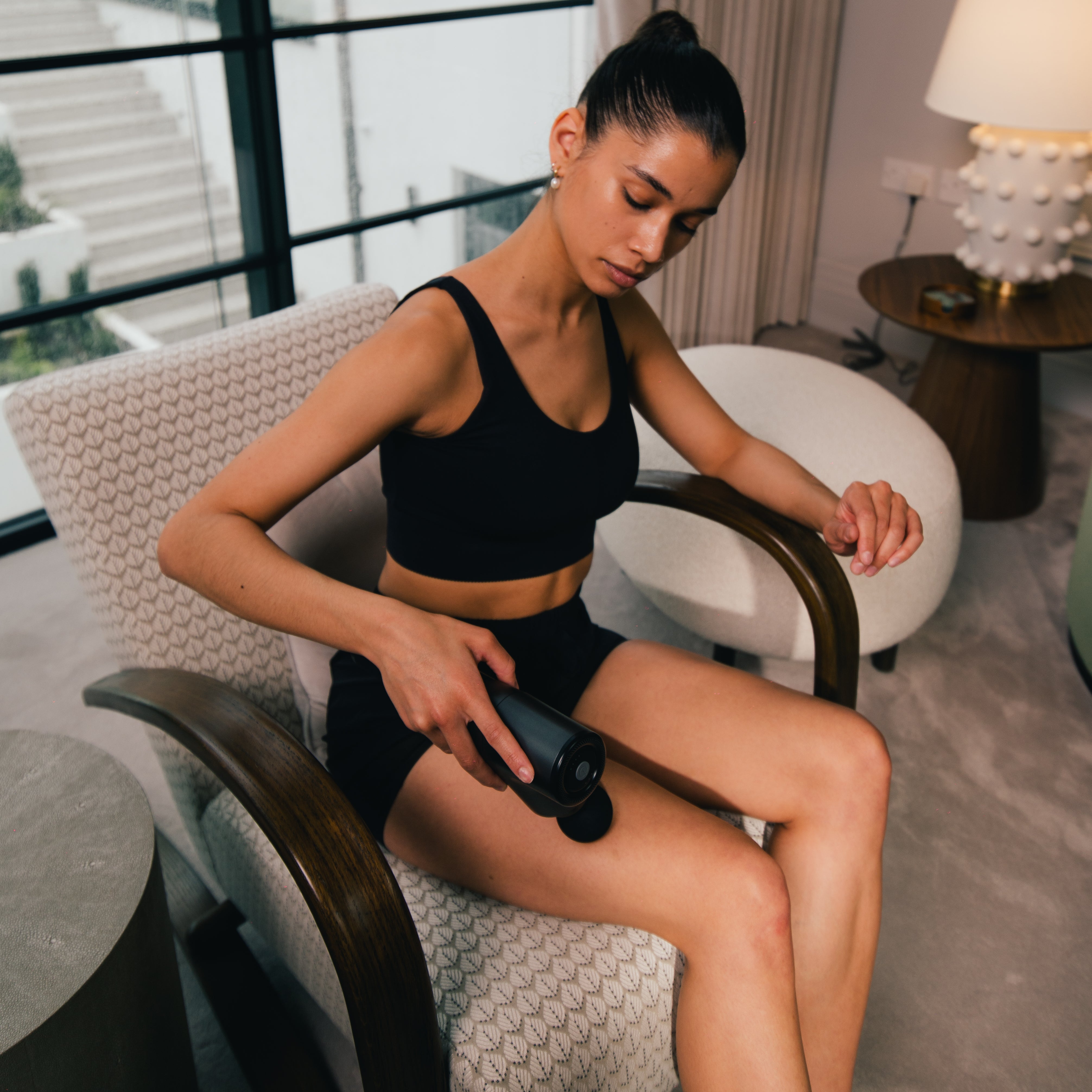Athletes know the importance and benefits of regular massages for maintaining healthy muscles. Massage is helpful to anyone who is physically active, such as swimmers, cyclists, or runners. Massage therapy is also good for those who have strenuous day-to-day activities at home or work, such as moms with small kids, gardeners, construction workers, and more.
You can incorporate massage into your workout to help you become fit, perform better, and recover faster after intense workouts. It can also help prevent injuries.
Many times, people see therapists only after having already been injured. They may also come in with stiff muscles from intense exercise. Massage can have a cumulative effect. You will see better results if you take care of your body more often.
What Happens When You Exercise?
Exercise or strenuous activity does more than increase muscle strength, flexibility, endurance, or muscular strength. Regular exercise can improve heart and respiratory function. It can also help with psychological depression and stress relief. Over time, the body will improve its ability to handle new challenges.
Our bodies go through three phases when we exercise – the tearing-out phase, recovery phase, or build-up phase.
The tearing-down phase is when we exercise hard and feel stiff and sore. We often increase our movements beyond what our body is used to.
What Causes Stiffness and Soreness?
Sometimes muscles don't feel sore immediately. Delayed muscle soreness can be felt for up to 24 hours after an exercise. It could be due to minor muscle damage, muscle spasms, reduced blood flow, or a build-up of energy waste products.
Trigger points, also known as knots, can also cause muscle soreness. Trigger points can be intense and cause pain in other parts of the body. It is not clear what triggers trigger points. They can be caused by sudden trauma or repetitive physical exertion.
Exercising too hard can also cause hypertonic muscles to become stiffer and less flexible. Poor blood flow can cause hypertonic muscles.
After exercising, the body enters the Recovery Phase. This is crucial to maximize the benefits of exercise and also the best time to do a massage!
What Physiological Effects Can Massage Have on Recovery?
Sports massage is an effective tool used by athletes to help them recover quickly from physical exertion, prevent injuries, and perform better in their chosen sport. A regular massage regimen can reduce soreness and fatigue and increase circulation for a faster recovery.
Massage can have a variety of physiological effects that improve your recovery.
The following are the most common physiological effects.
1. Removal of waste products
A massage can help you recover faster by removing waste products. Swelling is usually due to the build-up of waste products. While swelling helps to protect the area, it can also cause pain and prolong recovery. Toxins or waste products also cause muscular fatigue.
Massage stimulates the lymphatic system. A good lymph flow will help eliminate waste products faster, which leads to stronger, healthier muscles and decreased swelling and fatigue. This speeds up recovery.
2. Improved blood flow and Increased oxygenation
According to research from the University of Illinois at Chicago, massage therapy can improve blood flow and reduce muscle soreness following exercise.
Massage increases oxygenation and speeds up recovery by increasing blood flow. Recovery is dependent on the availability of oxygen. An increase in oxygenation can help maintain muscle strength and health, as well as reduce fatigue, which also aids recovery.
3. Realignment of collagen fibers
A massage can help improve your recovery by allowing you to realign collagen fibers or reduce their breakdown. One study proved collagen realignment due to a vacuum massage.
After strenuous exercises or an injury, collagen fibers form. However, they are not as elastic and flexible as normal muscle fibers, thus limiting one’s movement. This can lead to muscle tightening and increased pain.
Massage can help to reduce muscle tightness and restriction, which in turn decreases pain. The temperature of collagen fibers increases during a massage. This allows them to stretch and loosen. Collagen fibers become looser and are therefore broken down and realigned. The process of removing and realigning collagen fibers can speed up recovery.
Other Reasons for Athletes to Get A Sports Massage
- To Relax and relieve stress
- For general well-being and fitness
- To decrease muscle tension
- To prevent injuries
- To maximize your athletic performance
- To prepare both mentally and physically for an athletic activity
How Often Should You Get A Sports Massage?
Athletes who take their training and sport seriously should get at least 2-3 massages per week. However, this still depends on the frequency of training or competition, age, gender, and experience level with sports massages.
If you are seeking treatment for an injury, you may be asked to do it more often. It is best to consult with a therapist!
Self-Massage Tools Are Handy!
Massage guns are among the most effective massage tools. They are a revolutionary tool for athletes looking to improve their performance. This device delivers deep tissue massage to loosen tight muscles and increase circulation. This can help reduce fatigue, increase range of motion and flexibility, and even prevent injury.
Massage guns are also used to reduce stress and improve mental clarity. This helps athletes focus during workouts or games and can also help them to stay present and perform better.
Sports massage is more than just a great way to relax your muscles. It helps you make the most out of your athletic skills.
What about a massage gun from Protec Recovery? Let’s chat!





Leave a comment
This site is protected by hCaptcha and the hCaptcha Privacy Policy and Terms of Service apply.